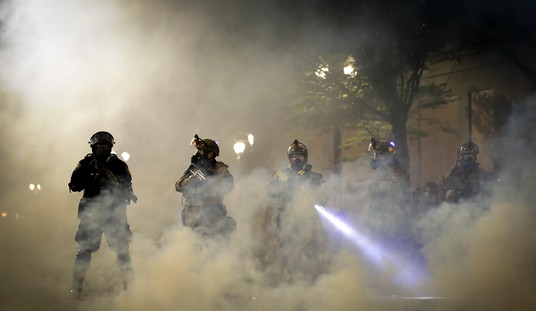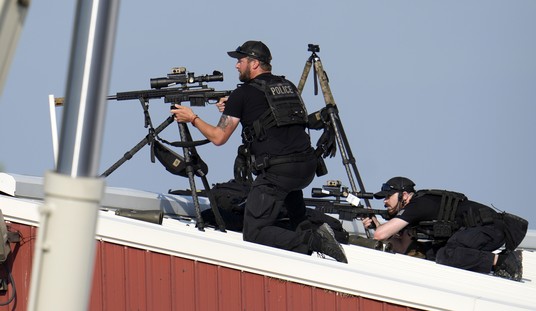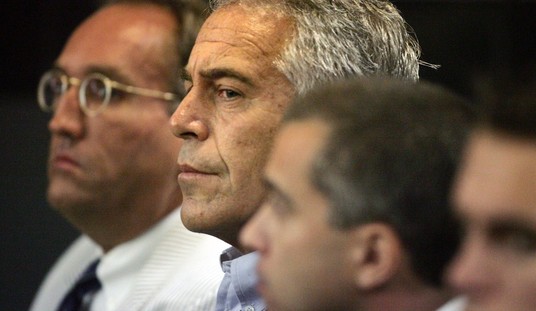
If you weren’t around, or old enough to know what was going on, during the period from, say, 1965 to 1970, it is near impossible to explain the turmoil the nation experienced caused by a perfect storm of events: the Civil Rights struggle, the assassination of Dr. Martin Luther King Jr., and the non-stop series of anti-war protests. The Democrat convention in Chicago had experienced a political version of the China Syndrome, revealing to America the moral bankruptcy of the Democrat party. (A lesson that has sadly been lost.) In the aftermath of 1968, in particular, it seemed as though America was heading for a full-blown civil war as both the Civil Rights movement and the anti-war movement drifted towards armed confrontation with the government.
Via the Kent State website:
Protests occurred the next day, Friday, May 1, across United States college campuses where anti-war sentiment ran high. At Kent State University, an anti-war rally was held at noon on the Commons, a large, grassy area in the middle of campus which had traditionally been the site for various types of rallies and demonstrations. Fiery speeches against the war and the Nixon administration were given, a copy of the Constitution was buried to symbolize the murder of the Constitution because Congress had never declared war, and another rally was called for noon on Monday, May 4.
Friday evening in downtown Kent began peacefully with the usual socializing in the bars, but events quickly escalated into a violent confrontation between protestors and local police. The exact causes of the disturbance are still the subject of debate, but bonfires were built in the streets of downtown Kent, cars were stopped, police cars were hit with bottles, and some store windows were broken. The entire Kent police force was called to duty as well as officers from the county and surrounding communities. Kent Mayor Leroy Satrom declared a state of emergency, called Governor James Rhodes’ office to seek assistance, and ordered all of the bars closed. The decision to close the bars early increased the size of the angry crowd. Police eventually succeeded in using tear gas to disperse the crowd from downtown, forcing them to move several blocks back to the campus.
The next day, Saturday, May 2, Mayor Satrom met with other city officials and a representative of the Ohio National Guard who had been dispatched to Kent. Mayor Satrom then made the decision to ask Governor Rhodes to send the Ohio National Guard to Kent. The mayor feared further disturbances in Kent based upon the events of the previous evening, but more disturbing to the mayor were threats that had been made to downtown businesses and city officials as well as rumors that radical revolutionaries were in Kent to destroy the city and the university. Satrom was fearful that local forces would be inadequate to meet the potential disturbances, and thus about 5 p.m. he called the Governor’s office to make an official request for assistance from the Ohio National Guard.
Then, as now, many American universities were hotbeds of radicalism. As today, much of the radicalism was self-interested. Under the Selective Service Act in effect in 1970, a young man who was enrolled full-time in college had an automatic deferment from the draft. Naturally, this safe haven attracted people who were opposed to the war the way Velcro attracts lint… in the long run it has peopled our university faculties with professors who pursued graduate degrees so as to stay in college until they were 27 years old.
In the past, demonstrations had been fairly risk free even when they turned violent. Something happened on May 4 that changed that calculus.
Shortly before noon, General Canterbury made the decision to order the demonstrators to disperse. A Kent State police officer standing by the Guard made an announcement using a bullhorn. When this had no effect, the officer was placed in a jeep along with several Guardsmen and driven across the Commons to tell the protestors that the rally was banned and that they must disperse. This was met with angry shouting and rocks, and the jeep retreated. Canterbury then ordered his men to load and lock their weapons, tear gas canisters were fired into the crowd around the Victory Bell, and the Guard began to march across the Commons to disperse the rally. The protestors moved up a steep hill, known as Blanket Hill, and then down the other side of the hill onto the Prentice Hall parking lot as well as an adjoining practice football field. Most of the Guardsmen followed the students directly and soon found themselves somewhat trapped on the practice football field because it was surrounded by a fence. Yelling and rock throwing reached a peak as the Guard remained on the field for about ten minutes.
This turned out to be a very poor evolutionary strategy:
Several Guardsmen could be seen huddling together, and some Guardsmen knelt and pointed their guns, but no weapons were shot at this time. The Guard then began retracing their steps from the practice football field back up Blanket Hill. As they arrived at the top of the hill, twenty-eight of the more than seventy Guardsmen turned suddenly and fired their rifles and pistols. Many guardsmen fired into the air or the ground. However, a small portion fired directly into the crowd. Altogether between 61 and 67 shots were fired in a 13 second period.
When it was over four students lay dead. Via Wikipedia:
Killed (and approximate distance from the National Guard):
- Jeffrey Glenn Miller; age 20; 265 ft (81 m) shot through the mouth; killed instantly
- Allison B. Krause; age 19; 343 ft (105 m) fatal left chest wound; died later that day
- William Knox Schroeder; age 19; 382 ft (116 m) shot in the back; fatal chest wound; died almost an hour later in a hospital while undergoing surgery
- Sandra Lee Scheuer; age 20; 390 ft (120 m) fatal neck wound; died a few minutes later from loss of blood
Oddly, enough all the dead seem to have been bystanders. Schroeder was an ROTC cadet. Nine students were wounded.
In quick succession by other violent clashes between draft dodgers student protesters and National Guard troops. On May 8, eight students at the University of New Mexico were bayoneted. On May 14, two students were killed and twelve wounded by police at a demonstration at Jackson State University. (One can’t help but notice that the Jackson State shootings do not fit into the modern left’s Pantheon of protests, probably because the students were working class blacks in the South rather than upper middle class white kids in Ohio.)
Any hope the anti-war movement might have had for a propaganda coup faded fast. A Gallup Poll released May 28 showed the protesters not the Guard were blamed by Americans:
Eight National Guardsmen were indicted and all were acquitted by the judge without having to present a defense. A civil trial ended with the jury finding the defendants nor liable for damages. That verdict was reversed and eventually settled out of court. The student protest movement silently faded away as the potential downside of rioting rapidly exceeded the benefits.
Kent State is one of those events that was important at the time. Some hippies made good money singing about it
in retrospect it seems as though it was for nothing. Four young people who weren’t involved were killed. The war in Vietnam creaked towards its preordained conclusion. Nixon won a second term. And the organizers are probably teaching sociology in Ivy League schools, chasing undergrads (of whichever of Facebook’s 51 genders sends a thrill up their leg) and voting Democrat.
&nb















Join the conversation as a VIP Member